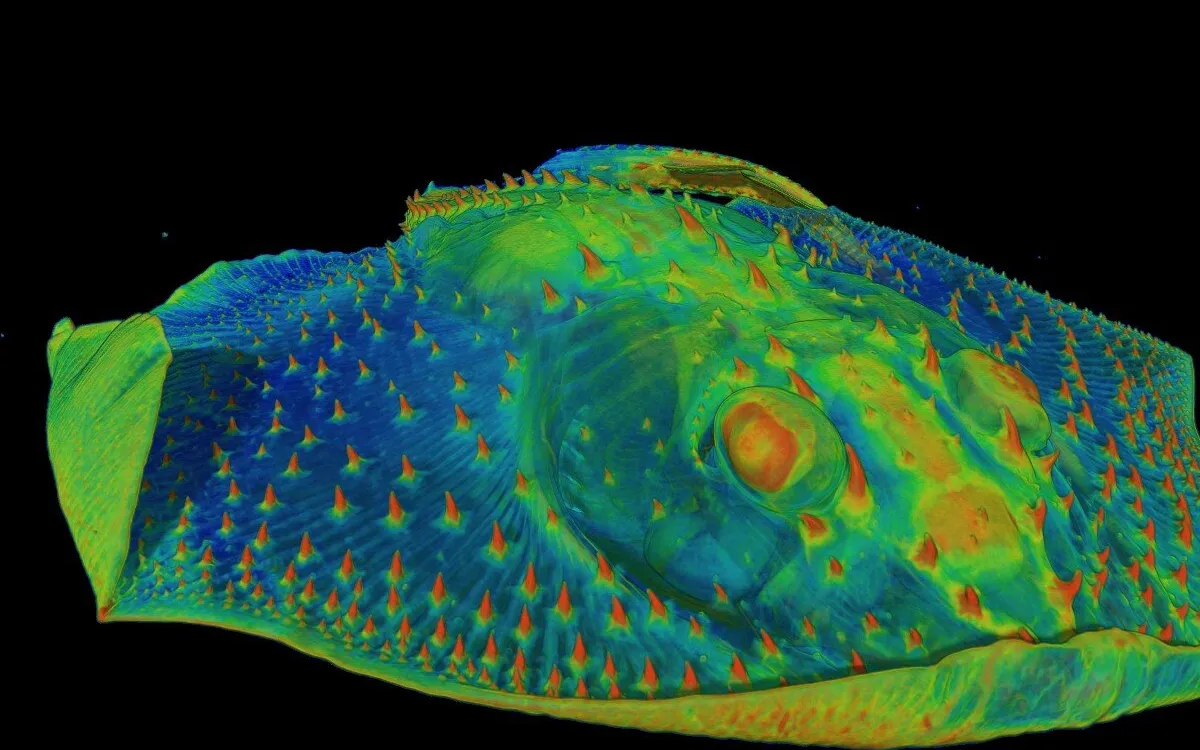
If you've ever felt the discomfort of sensitive teeth during a dental cleaning, you understand how vital this sensitivity is. It provides crucial feedback regarding temperature, pressure, and even pain while we chew our food. Interestingly, recent research from the University of Chicago reveals that the sensitive tissues inside our teeth evolved for a different purpose altogether. This groundbreaking study highlights the evolutionary roots of dentin, the inner layer of teeth that transmits sensory information to the nerves within the pulp.
Paleontologists have long posited that teeth originated from the bumpy structures found in the armored exoskeletons of ancient fish. However, the exact function of these structures remained a mystery. The new research published in Nature provides clarity, confirming that these early vertebrate fish from the Ordovician period, approximately 465 million years ago, contained dentin. This dentin likely played a significant role in helping these creatures sense their aquatic environment.
In addition to this revelation, the research also demonstrated that structures regarded as teeth in fossils from the Cambrian period (485–540 million years ago) bear similarities to features found in the armor of fossilized invertebrates and sensory organs in the shells of modern arthropods, such as crabs and shrimp. These findings suggest that sensory organs evolved independently in both vertebrates and invertebrates, enabling them to perceive their surroundings more effectively.
Dr. Neil Shubin, a leading figure in the study and the Robert R. Bensley Distinguished Service Professor of Organismal Biology and Anatomy at the University of Chicago, emphasized the importance of sensory capabilities in early armored animals. He remarked, "In a predatory environment, being able to sense the properties of the surrounding water was crucial." The research highlights that even invertebrates, like horseshoe crabs, developed similar solutions for environmental sensing.
The lead researcher, Dr. Yara Haridy, initially set out to determine what the earliest vertebrate in the fossil record was, rather than focusing on the origins of teeth. To achieve this, she collected fossil specimens from the Cambrian period across museums in the United States to perform CT scans, searching for features characteristic of vertebrates.
One key indicator was the presence of dentin within the bumps on external armor, known as odontodes. Haridy amassed hundreds of fossil specimens, some as small as a toothpick, and subjected them to high-resolution scans at the Argonne National Laboratory. "It was a night at the particle accelerator; that was fun," Haridy recalled. As the scans progressed, a sample from a Cambrian fossil named Anatolepis displayed what seemed to be vertebrate characteristics, including a series of tubules filled with dentin-like materials.
This discovery was exhilarating for the research team, as it suggested the presence of the earliest tooth-like structures in vertebrate tissues from the Cambrian period. However, further analysis revealed that Anatolepis was not a vertebrate but rather an ancient invertebrate arthropod. This confusion arose when they compared it to a known arthropod fossil, discovering that what appeared to be dentin-lined tubules were more akin to the sensory organs on crab shells, called sensilla.
Interestingly, structures in another Ordovician vertebrate, Eriptychius, displayed similar structures to sensilla but did contain dentin. This finding indicates that 'teeth' can serve sensory functions even outside the mouth, demonstrating that both fish and arthropods possess sensitive armor.
Haridy's study also shed light on tooth-like structures known as denticles, found in sharks, skates, and catfish, which contribute to the sandpaper-like texture of their skin. During her investigations, she discovered that the denticles in catfish were linked to nerves, similar to teeth. "The similarities among teeth, ancient odontodes of armored fish, and the sensilla found in arthropods are striking," Haridy noted.
The research supports two main theories regarding how these structures evolved into teeth. The first, termed the inside-out hypothesis, posits that teeth originated first and were later adapted for exoskeletons. Conversely, the outside-in hypothesis suggests that sensitive structures developed initially on exoskeletons, which were later adapted into sensitive teeth using a shared genetic toolkit.
While the study did not definitively identify the earliest vertebrate fish, Dr. Shubin believes the findings are significant. "Although we didn't locate the earliest one, we discovered something even more intriguing," he stated, highlighting the importance of understanding the evolutionary pathways that led to the development of sensitive teeth and sensory structures in both vertebrates and invertebrates.